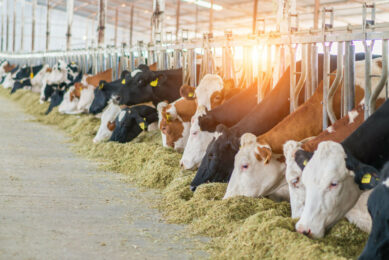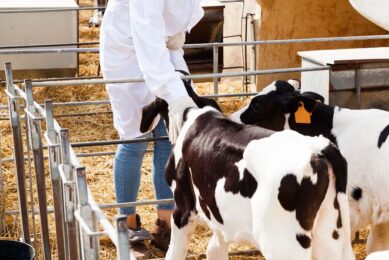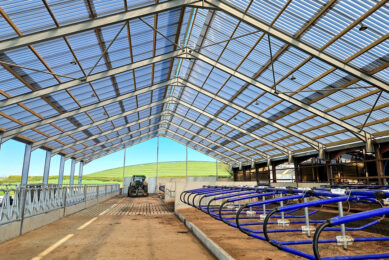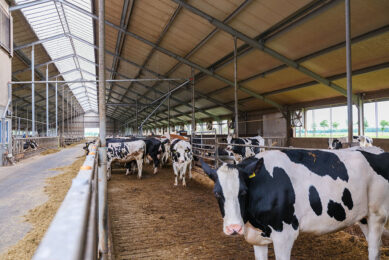Stray voltage issues in the dairy barn
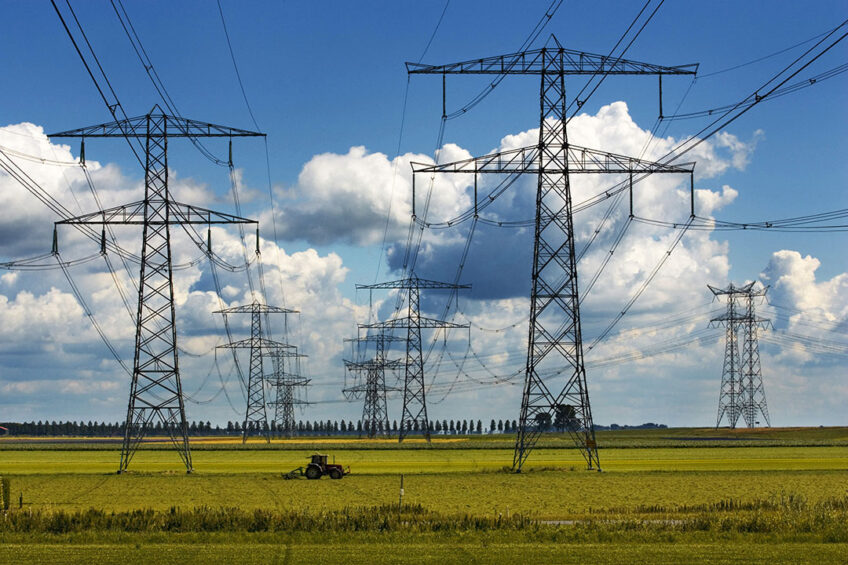
The devastating impact of stray voltage on farms in Ontario, Canada, is a long-standing and well-documented problem, and one that can have particularly devastating impacts on the health of dairy cattle. But where does the stray voltage come from?
Stray voltage can impact health and performance of dairy cattle. However, determining the true source of stray voltage issues can often be a long, painful, and very expensive process for farmers and electric utilities alike. Indeed, the immense cost to utility companies of reconfiguring electricity grids – as well as gaps in knowledge on the part of farmers and electrical contractors – continue to perpetuate the issue.
But while the former might be out of farmers’ hands, by in large, there can be ways to more efficiently gain control of the latter. For this reason, the Electrical Safety Authority (ESA) – the government-mandated electric authority for the province of Ontario – is currently in the process of developing resources to help farmers and electricians more efficiently troubleshoot and prevent stray voltage issues coming from farm sources.

Barn electrical systems common culprit
Malcolm Brown, western regions technical advisor for the ESA, explains that all reports of stray-voltage must be investigated according to the Ontario Energy Board. A Rapid Response Team created by Hydro One, a major utility in the province, for example, has to respond to these reports. However, Mr Brown says response team members would often find voltage issues coming from on-farm systems while visiting sites as part of their investigations. This would leave farmers frustrated since significant time was wasted scheduling and conducting site investigations, only to have the investigators not fix their issues. Hydro One did not provide any statistics on how many cases have been determined, by their rapid response team assessors, to be a result of grid-sourced issues as opposed to inadequate or improperly configured farm electrical systems.
Potential on-farm sources include: Poor or faulty wiring, improper grounding and bonding, unbalanced farm loading, overloaded circuits or panels and defective equipment. In cases where stray voltage is determined to come from on-farm electrical systems, the responsibility to deal with the problem rests with the farmer alone. This poses another challenge since the farmer in question – and indeed the electrician(s) they may hire – are not usually experts at determining how to fix their systems. “When equipment fails, livestock are often dependent on a quick resolution that puts farmers in the position of coming up with an innovative solution,” says Mr Brown. “Farmers might repair or hook something up not realising the potential problems, then it gets forgotten about as the days and tasks continue passing.”
Resources to address knowledge gap
In response, the Electrical Safety Authority established a working group to develop “a farmers’ guide to basic troubleshooting of stray voltage.” The resource was developed in partnership with utilities, the Ontario Federation of Agriculture, Ontario Ministry of Agriculture, Food and Rural Affairs, and farmers. The document provides technical information that can guide basic electrical troubleshooting on farm electrical systems and help identify and mitigate the customer contribution of stray voltage. “I had a number of farmers at the Outdoor Farm Show alone who were ready, after we talked about the resource, to leave immediately and check their own systems,” Mr Brown says. The Electrical Safety Authority is now working on a similar resource specifically for electrical contractors. “It seems like simple stuff […] but seemingly small mistakes can have big consequences. Until someone puts it down on paper it can be easy to overlook some of these issues,” says Mr Brown. “Working on farm electrical systems is a specialised task. ESA strongly recommends hiring a Licensed Electrical Contractor with agricultural experience.”

Patrick Lynch, an engineer with Power Line Systems Engineering Inc, a specialised electrical power testing service that works on stray voltage issues in both agricultural and urban settings, adds that well-intentioned professionals, not to mention the farmers themselves, can even make stray voltage problems worse regardless of the problem’s source. Resources like those developed by the Electrical Safety Authority are not a bad thing, he says, though a true understanding of stray voltage, regardless of the setting, can’t be picked up overnight. “You have to have the equipment and the knowledge base. There’s a huge chasm there,” says Mr Lynch.
A notable case at a dairy farm near Orangeville, Ontario highlights just how difficult it can be to find sources of stray voltage on the farm. The farmer in question, Mr Lynch says, spent in excess of CAN$ 100,000 trying to solve his electrical issues, which almost bankrupted the farm. Efforts made to correct things were ineffective and at times even counterproductive, but this may not have been the case if the farmer and electrical contractors involved in investigating knew what they were looking for. Still, Mr Lynch says many stray voltage issues are certainly coming from the grid itself; the only true solution is a reconfiguration of the local electrical infrastructure – and thus far, he says, the truly massive cost of doing so has kept utility providers away.
| Stray voltage: A growing issue Because of the use of electronics in the barn, the risk of stray voltage increases. This is according to the Belgium research institute ILVO and Fedagrim, the branch organisation for machine suppliers. Together, they have published a brochure for farmers about this problem. Electronics is hidden in a number of things in the dairy barn, such as the milking machines, automatic gates and solar panels. ILVO and Fedagrim state that stray voltage can never be excluded, which can lead to components such as fences to come under tension. Since the barn is full of metal parts, there is a chance that voltage differences between different objects occur. We also have to consider that cows are much more sensitive than humans. Nervous behaviour or a decrease in feed or water intake may be indications that there is stray voltage in the barn. The presence of stray voltage can be due to different factors. For example, damage of the insulation due to rats or other vermin or rusted earthed wires. Meanwhile, a working group has been set up in Belgium where all major suppliers and installation companies are working together to tackle the stray voltage problems. |
Join 13,000+ subscribers
Subscribe to our newsletter to stay updated about all the need-to-know content in the dairy sector, two times a week.



